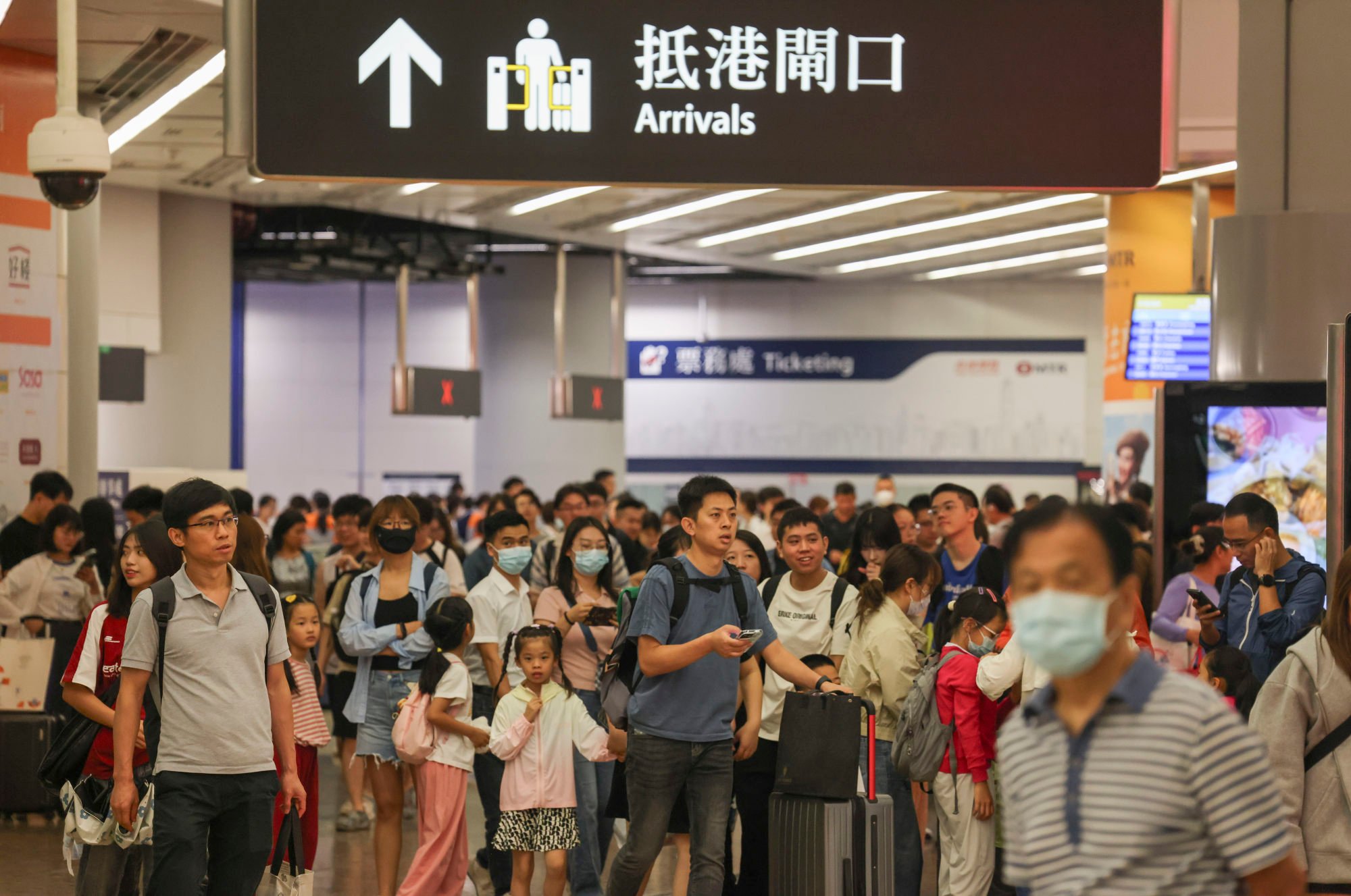
‘Golden week’ tourism lessons to be learned in Hong Kong
- Hong Kong can congratulate itself on the high number of mainland visitors despite the awful weather, but there’s still room for fresh ideas and better targeted policies
Expectations can set the bar high when they do not allow for unforeseen events. The “golden week” holiday that ended on Sunday is a case in point.
Tourism chief Kevin Yeung Yun-hung earlier forecast mainlanders would make 800,000 cross-border visits to Hong Kong over the five days and spend HK$2.3 billion, buoying hopes of a boost to economic recovery.
Such expectations did not factor in the bad weather that rained on most of the holiday.
Despite that, the estimated total of more than 750,000 visits came close, and the 893,000 total for all visitors was 23.5 per cent up on the same holiday last year. In the circumstances, “we’ve done a great job,” Yeung said.
In that sense a pat on the back is in order before removing the weather filter. The reality is that Hong Kong’s tourism industry is still struggling to recover, with the number of trips to the city over the holiday reaching only two-thirds of pre-pandemic levels.
The year-on-year increase in visitor numbers is therefore no reason to sit back and relax. Competition for tourism-led economic recoveries is intense and can only get more so.

That said, the surge in mainland domestic golden week tourism, beating pre-pandemic levels, is a good omen. But it was not matched by average personal spending. This suggests a more discerning approach to consumption.
Evidence of that is also to be found in Hong Kong, with more mainlanders spending their nights in cheaper hotels across the border and commuting to the city for day trips. In that regard, the strong local dollar would also have weighed on tourist spending.
A mainland-driven tourism rebound cannot be taken for granted. There is a lot of work to be done in developing and promoting the city as not just a shopping destination, but a feast of unique cultural experiences.
Hopefully, preparations for the next golden week holiday in October will reflect lessons of the latest one. It is not just down to the government. Business and tourism industry leaders must rise to the challenge, too.
It is good to hear from Financial Secretary Paul Chan Mo-po that the government will continue to promote mega events to attract more tourists. But industry leaders are right to say there is a need for better targeted policies, including fresh ideas, in the tourism blueprint to be unveiled later this year.

